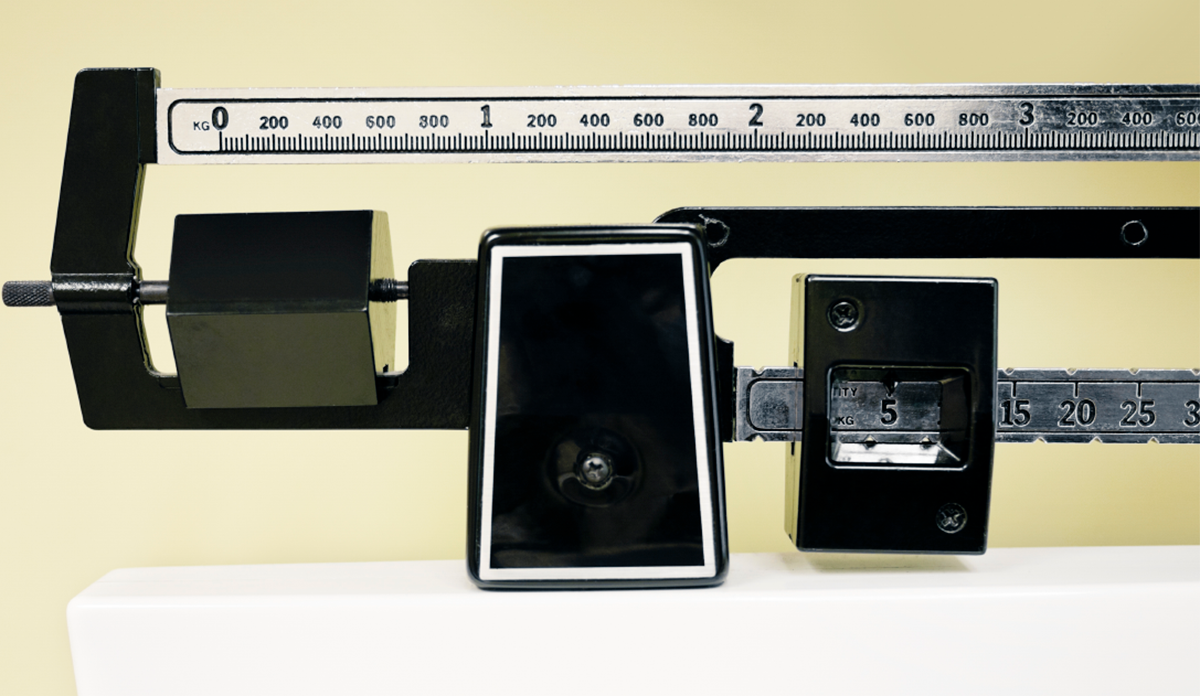Standing in line in your middle school cafeteria, you’re more nervous than you are before any test, even math. It’s weighing day.
Forty percent of US children live in states that require schools to send annual body mass index (BMI) reports to guardians. BMI is calculated as weight divided by height, and it’s used to classify people into categories. Policymakers argue school BMI policies prevent childhood obesity. But recent research indicates that the practice is not only ineffective. It’s harmful.
Madsen and team wanted to test the effects of these BMI checks. They randomly divided 79 California elementary and middle schools into three intervention groups—BMI screening, BMI screening and reporting, or no BMI screening or reporting. In the BMI screening groups, students were weighed and measured during school. In the reporting group, every student was sent home with a report that listed their BMI and their weight classification: “overweight”, “at risk for becoming overweight”, “healthy weight”, or “underweight”.
BMI reporting had no effect on BMI among kids who were classified as overweight at baseline over the three years.
Further, students who underwent BMI screening at school grew more dissatisfied with their weight than students who weren’t screened. When students were weighed at school, their peers were more likely to talk about weight. When teenagers talk about weight a lot, they’re more likely to develop eating disorders. BMI reporting increases the likelihood that parents will put their teens on diets. Dieting among most teenagers is ineffective, and it may actually promote weight gain.
It’s not shocking that BMI measurement and reporting are ineffective at reducing weight among “overweight” students. The measure was invented nearly 200 years ago by Belgian astronomer and statistician, Adolphe Quetelet. His work aimed to identify physical traits of the average man. To Quetelet, a phrenologist, the average man represented a social and physical ideal. The moral measure was a far-cry from the referendum on individual health it functions as today.
Height and weight ratios weren’t considered a primary indicator of health until the early twentieth century. Life insurance companies started using BMI as a health measure to calculate what to charge policyholders in 1959. By 1985, a National Institutes of Health (NIH) panel tied their definition of obesity to BMI. Yet this committee also noted that their BMI tables may not be applicable to low-income populations, people of color, or children. They cite additional short-comings, including that frame size, muscle mass, and location of fat are not taken into account. In 1998, the NIH lowered their thresholds for being “overweight” and “obese”. Millions of Americans became “at-risk” overnight.
There are several fundamental problems with using BMI as a measure of obesity. First, while it’s true that people with high levels of body fat have high BMIs, a high BMI does not mean someone has high body fat. Though BMI is used as a health predictor, mortality and morbidity vary across people with the same BMI but different builds. Finally, the current BMI cut-off for “obese” fails to correctly classify about half of all people who are considered obese by body fat percentage.
BMI isn’t a great measure of individual health, especially among children. The practice gets peers and parents talking about weight, but those conversations don’t decrease the prevalence of childhood obesity.
BMI measuring and reporting in schools is ineffective partially because BMI isn’t a great measure of individual health, especially among children. The practice gets peers and parents talking about weight, but those conversations don’t decrease the prevalence of childhood obesity. To improve student health, schools should instead put time and resources towards evidence-based interventions like increasing physical education time and improving quality of school lunches.
For more information on school-based interventions, check out this extensive list of prevention recommendations.
Photo via Getty Images














